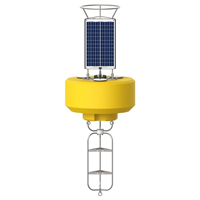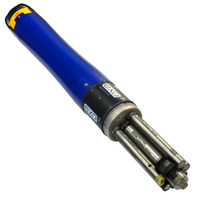 While harmful algal bloom research has become more common in freshwater lakes recently, Stone Lab is one of the oldest research groups that have focused on studying microcystin and other toxins. For more than 100 years, Stone Lab has conducted biology research and provided science education and outreach to the region.
While harmful algal bloom research has become more common in freshwater lakes recently, Stone Lab is one of the oldest research groups that have focused on studying microcystin and other toxins. For more than 100 years, Stone Lab has conducted biology research and provided science education and outreach to the region.
Stone Lab’s Research Coordinator and Senior Researcher, Justin Chaffin, oversees ongoing microcystin research on Lake Erie and other Ohio lakes at Stone Lab. Chaffin also helps coordinate outreach events and visiting researchers who can use Stone Lab’s facilities and research vessels.
Challenges: Creating a Microcystin Toxicity Forecast
Developing a better approach to microcystin monitoring and forecasting has become increasingly necessary as health professionals have studied the effects of the toxins on human health. Chaffin has worked on a number of shorter-term studies and overseen the long-term real-time harmful algal bloom monitoring efforts occurring at the lake.
Recently, Stone Lab has assisted in the creation of a microcystin toxicity forecast for Lake Erie. The NOAA-led initiative sought to identify what controls how fast Microcystis produces microcystin. The data will then be used to construct a model that forecasts microcystin concentrations.
 A comprehensive data set that captures the dynamics of harmful algal blooms is necessary to build a forecast system. This data set must include water quality conditions before, during, and after the bloom has occurred. Beyond just bloom behaviors, researchers are most interested in identifying what controls how fast Microcystis produces microcystin.
A comprehensive data set that captures the dynamics of harmful algal blooms is necessary to build a forecast system. This data set must include water quality conditions before, during, and after the bloom has occurred. Beyond just bloom behaviors, researchers are most interested in identifying what controls how fast Microcystis produces microcystin.
Chaffin explains, “The main thing we looked at is how cyanobacteria produce toxins. Why? When do they produce toxins? Where, and at what rate, are they producing toxins?” He continues, “Then we look at the why. What environmental factors are associated with that? Is it temperature? Is it light, phosphorus or nitrogen levels? Is it pH? What triggers cyanobacteria to produce toxins?”
Solution: Monitoring Microcystis Over Time
Since Stone Lab has been monitoring cyanobacteria and Microcystis in the lake for years, they already had foundational long-term data available, and combining Stone Lab’s dataset with datasets from other institutions creates a really robust dataset. A real-time buoy-based system has been deployed for the past several years in order to monitor various parameters known to influence and be indicators of cyanobacterial blooms.
 The NexSens CB-1250 is equipped with a YSI EXO2 and X2-CB data logger that logs data every 15 minutes and then transfers it to the cloud, where the data is viewable from WQData LIVE. The EXO2 is equipped with sensors that collect total algae and cyanobacteria levels, water turbidity, temperature, pH, fDOM, dissolved oxygen, and specific conductivity data.
The NexSens CB-1250 is equipped with a YSI EXO2 and X2-CB data logger that logs data every 15 minutes and then transfers it to the cloud, where the data is viewable from WQData LIVE. The EXO2 is equipped with sensors that collect total algae and cyanobacteria levels, water turbidity, temperature, pH, fDOM, dissolved oxygen, and specific conductivity data.
In addition to the buoy, grab sampling, mesocosm studies, and algae incubation research are conducted to develop a more well-rounded idea of how Microcystis creates microcystin.
Benefits: Studying Cyanobacteria Closely and Building Models
A functional toxicity forecast could help inform water treatment operators, beach managers, and news media, who can report toxicity levels to the public and inform them where to go on the beach to avoid blooms.
The addition of grab sampling at different locations on the lake ensures the buoy’s data accuracy and helps to bridge the gap in data during the off-season when the buoy isn’t deployed. The incubators and mesocosm studies allow for a controlled environment where cyanobacterial blooms can be manipulated and observed. The data gathered by the buoy and additional sampling efforts will be used to develop the models necessary for the forecast system.
The Bottom Line
 Harmful algal blooms cause short-term and long-term impacts to lake health over time and threaten water resources. While algal blooms are often discussed in terms of impacting the appearance of lakes, cyanobacteria blooms that produce toxins like microcystin can be much more damaging.
Harmful algal blooms cause short-term and long-term impacts to lake health over time and threaten water resources. While algal blooms are often discussed in terms of impacting the appearance of lakes, cyanobacteria blooms that produce toxins like microcystin can be much more damaging.
Chaffin explains, “We’re learning that these toxins can be volatilized and get in the air. So just standing on the beach can expose you to the toxins, but the main focus has been on producing safe drinking water. Ultimately, it comes down to people, and everyone needs access to clean water. Bottle water is expensive and wasteful. And most people like to play in the water. Whether it’s swimming or boating, fishing, or you’re strolling along the beach, everyone needs fresh water.”
Researching cyanobacteria behaviors is one step in ensuring that water bodies like Lake Erie are able to continue being used recreationally and for drinking water in the future.
Equipment
The CB-1250 offers increased flotation and solar charging for heavy or power-hungry sensors while still maintaining a relatively small footprint.
The YSI EXO represents the next generation of water quality instruments from YSI. The EXO2 sonde includes six sensor ports and a central anti-fouling wiper option.
The NexSens X2 Environmental Data Logger offers the latest in real-time monitoring technology with wireless communication, large plug-and-play sensor library, and ultra-low power consumption.
WQData LIVE is a web-based project management service that allows users 24/7 instant access to data collected from remote telemetry systems.




